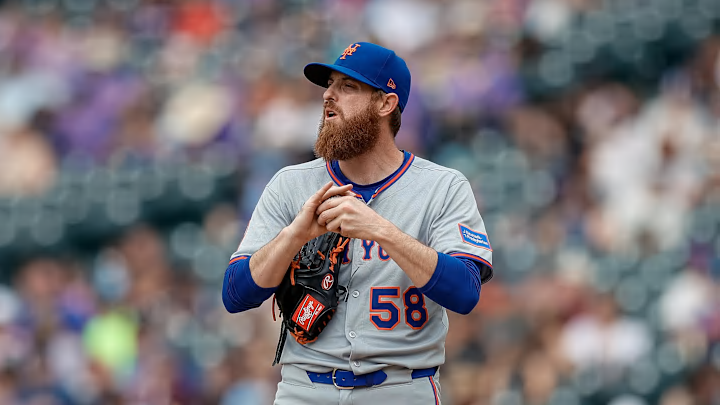The schedule didn’t sneak up on the New York Mets; they knew exactly what was coming, ten games straight against division rivals, with no soft landing in sight. It started with three in Atlanta, continues now in Philadelphia, and still four more against the Braves await. This long, uncomfortable stretch is designed to reveal exactly where they stand in the division.
They’ve already dropped the first four games, and those losses do more than just hurt the standings, they leave a lasting impression. It’s not simply about who they faced, but what those games exposed. The NL East doesn’t allow for bluffing, especially against pitching this sharp, polished, and relentless. Right now, the Mets are getting a clear look at what it means to go up against teams with an edge they lack.
As the NY Mets endure this division gauntlet, the gap in ace-level starting pitching between them and their rivals has become impossible to ignore.
The Mets didn’t come into this season searching for an ace, they went shopping for upside. Instead of locking in a frontline starter, they filled the rotation with Mets Pitching Lab projects and calculated bets. To their credit, it worked, for a while. Over the first 60-plus games, the rotation led MLB in ERA, a surprising strength that masked long-term concerns. But as summer arrived and injuries set in, the stability faded.
Since June 8, Mets starters have posted a 4.22 ERA and a 1.31 WHIP across ten games, allowing five home runs and handing out 26 walks. Just two starts during that stretch lasted more than six innings, both from David Peterson. Four didn’t even make it through five innings. It’s the exact opposite of what an ace is expected to provide: length, reliability, and a game that doesn’t unravel by the third inning.
Making matters worse is the contrast on the other side. The Mets just faced Chris Sale, Spencer Strider, and Zack Wheeler, three arms who define what a top-tier starter looks like in a pennant race. Each one attacked the strike zone and gave their team a chance to win. The Mets don’t have that luxury right now. What they do have are arms like Griffin Canning and Paul Blackburn, both of whom carry more history of struggle than success.
Even Clay Holmes, a reliever-turned-starter, has already thrown more innings this season than he ever has. It’s a testament to how thin things have become. Without a true ace to steady the ship, the Mets are leaning on arms not built to carry this kind of weight, and it’s starting to show.
There’s still time to adjust, but the Mets are learning the hard way that patchwork won’t hold forever. The early-season success gave them breathing room; this stretch has taken the air right back out. If they want to stay in the race, it won’t be enough to hope for bounce-backs or breakthroughs. At some point, they’ll need a stabilizer, someone who doesn’t flinch when everything starts to tilt. Because right now, it’s already tilting.
